Houseplants bring life, freshness, and beauty into your home, but to keep them lush and thriving, regular fertilizing is essential. Just like humans need a balanced diet, plants rely on nutrients to grow strong, vibrant, and healthy. However, many plant owners either overfeed or neglect fertilizing altogether, leading to weak growth, yellow leaves, or poor blooming.
Creating a consistent fertilizing routine ensures your plants receive the right nutrients at the right time, helping them stay resilient and beautiful year-round. In this detailed guide, you’ll learn everything about building a fertilizing schedule, choosing the right fertilizers, and avoiding common mistakes — naturally and effectively.
1. Understanding Why Fertilizing Is Essential for Houseplants
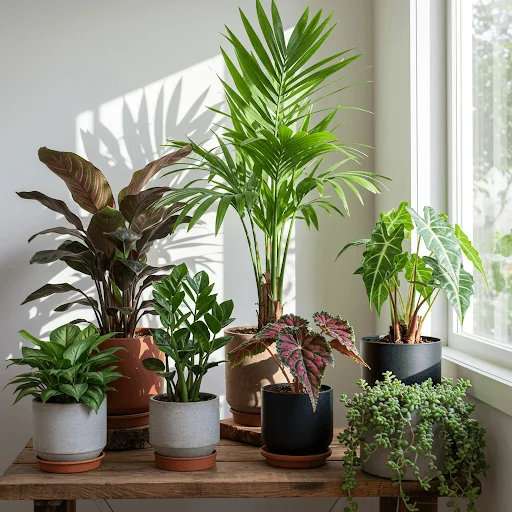
Indoor plants live in containers, which means they rely entirely on you for nutrients. Unlike outdoor plants, they cannot draw minerals from deep soil layers or benefit from natural compost. Over time, the nutrients in potting soil deplete through watering and root absorption.
Fertilizing replaces these lost nutrients, providing the three major elements essential for healthy plant growth:
- Nitrogen (N): Promotes leafy green growth.
- Phosphorus (P): Encourages strong roots and blooming.
- Potassium (K): Improves overall plant health and disease resistance.
In addition, micronutrients like calcium, magnesium, iron, and zinc also support overall plant vitality. Without proper fertilization, plants become pale, stunted, and more prone to diseases.
2. Know Your Plant’s Nutrient Needs
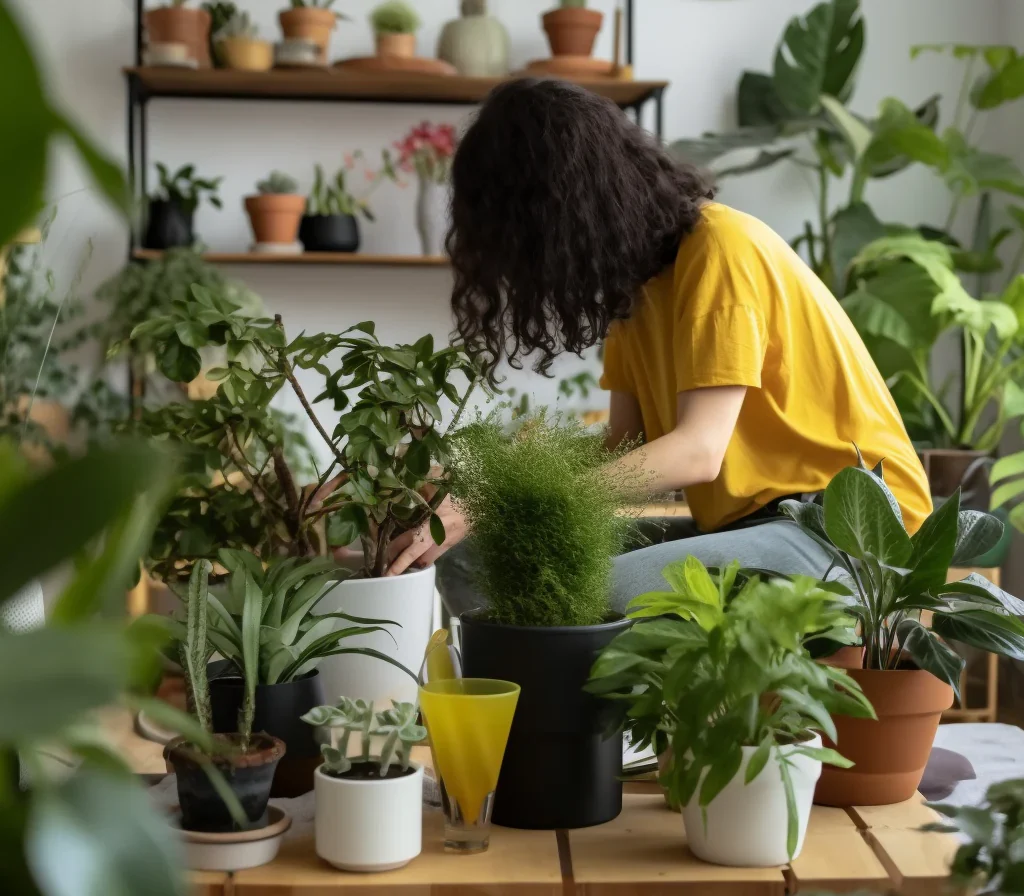
Not all houseplants need the same amount or frequency of fertilization. Some species are heavy feeders, while others are light feeders.
Here’s a quick breakdown:
- Heavy feeders: Flowering plants like hibiscus, begonias, and African violets; fast-growing foliage plants like pothos, philodendrons, and monsteras.
- Moderate feeders: Peace lilies, spider plants, and ferns.
- Light feeders: Succulents, cacti, and slow-growing plants like snake plants and ZZ plants.
Knowing your plant’s growth rate and nutrient needs helps you design a routine that avoids both overfeeding and deficiency.
3. Choosing the Right Type of Fertilizer
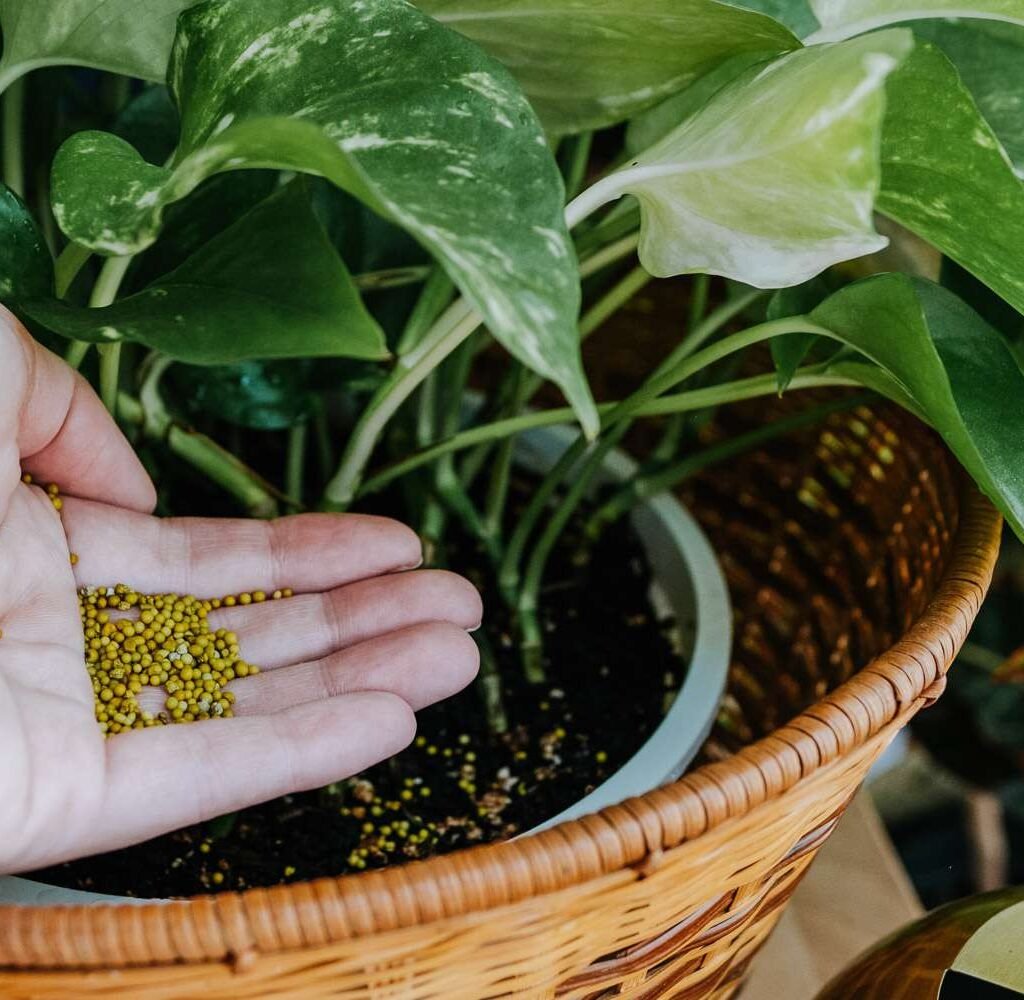
Houseplant fertilizers come in different forms, and understanding them helps you pick what fits your lifestyle best.
Liquid Fertilizers
- Best for: Frequent feeders and fast-growing plants.
- Advantages: Easy to mix with water and apply during regular watering.
- Routine: Use every 2–4 weeks during the growing season (spring and summer).
Slow-Release Fertilizers
- Best for: Busy plant owners.
- Advantages: Nutrients release gradually over time, reducing maintenance.
- Routine: Apply every 2–3 months.
Organic Fertilizers
- Examples: Compost tea, seaweed extract, worm castings, or banana peel water.
- Advantages: Natural, safe for pets and children, improves soil structure.
- Routine: Can be used every 3–4 weeks in diluted form.
Granular Fertilizers
- Best for: Large pots and outdoor containers.
- Routine: Apply every 2–3 months and water thoroughly after application.
When choosing, always check the N-P-K ratio on the label. A balanced fertilizer (10-10-10 or 20-20-20) is suitable for most plants, while flowering plants benefit from higher phosphorus (e.g., 10-20-10).
4. Understanding the Fertilizing Seasons
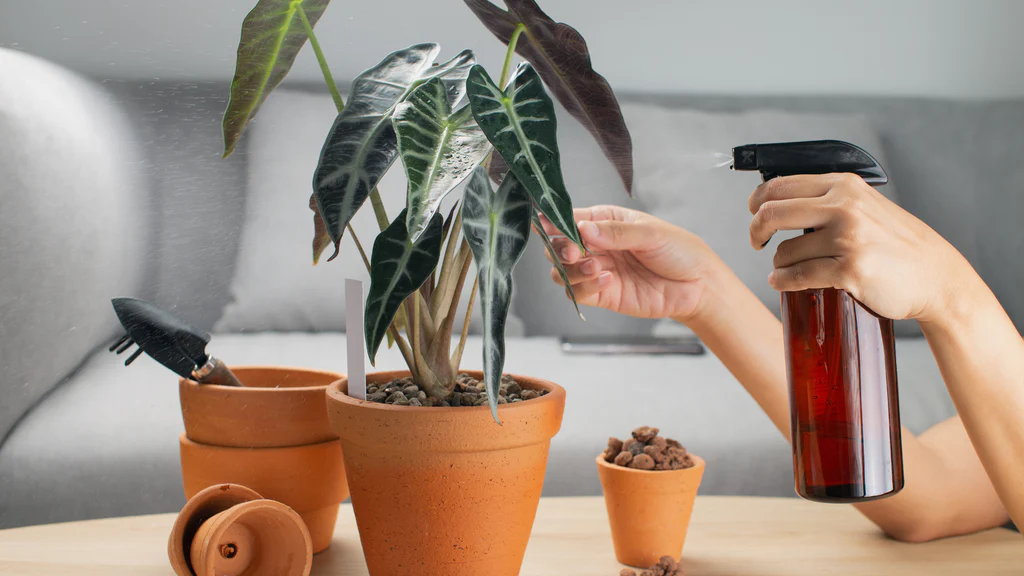
Houseplants go through growth cycles depending on the time of year:
- Spring and Summer (Active Growth): Plants grow new leaves and roots. This is the best time to fertilize regularly — every 2 to 4 weeks.
- Autumn (Slowing Down): Growth slows; reduce frequency to once a month.
- Winter (Dormancy): Most plants rest; stop fertilizing entirely until spring returns.
Succulents and cacti, which thrive in dry climates, often have different cycles — fertilize them lightly during their active growing months (usually spring and early summer).
5. Step-by-Step Guide to Building a Consistent Fertilizing Routine
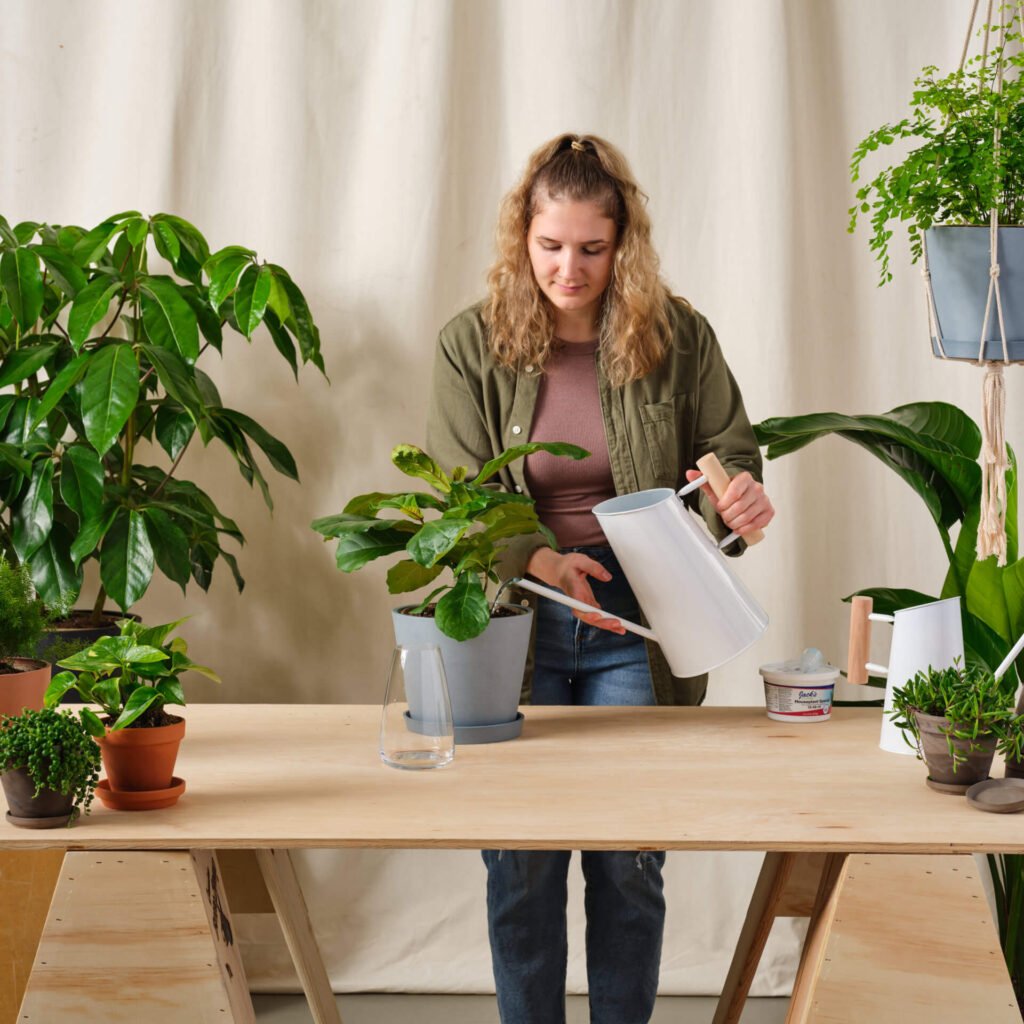
Creating a fertilizing schedule helps you maintain healthy growth without confusion. Here’s how to set one up:
Step 1: List All Your Houseplants
Start by writing down all the plants you have, their types (foliage, flowering, succulent, etc.), and their feeding needs. This helps tailor your approach instead of using a one-size-fits-all routine.
Step 2: Group Plants by Feeding Type
- Group A: Heavy feeders (fertilize every 2 weeks)
- Group B: Moderate feeders (every 3–4 weeks)
- Group C: Light feeders (every 6–8 weeks)
Label them with tags or note it in your plant journal.
Step 3: Choose Fertilizer Type
Decide between liquid, slow-release, or organic options depending on your schedule and preference.
Step 4: Create a Fertilizer Calendar
Use a monthly planner or phone reminder app to mark fertilizing days. For instance:
- 1st & 15th of each month: Heavy feeders.
- 15th of every month: Moderate feeders.
- 1st of every 2nd month: Light feeders.
Consistency helps avoid overfeeding and ensures balanced nutrient supply.
Step 5: Combine With Your Watering Routine
For most houseplants, fertilizing works best when the soil is slightly moist. Apply fertilizer right after watering or mix it with water to prevent root burn.
6. Signs of Overfertilization and How to Fix It
Even with a routine, it’s easy to overdo it. Look for these warning signs:
- White crust on soil surface (salt buildup).
- Yellow or brown leaf tips.
- Droopy leaves despite adequate watering.
- Slow growth or wilting.
How to Fix:
- Flush the soil with clean water 2–3 times to remove excess fertilizer salts.
- Let the soil drain completely.
- Avoid feeding for 4–6 weeks.
A balanced routine should always focus on moderation — it’s better to underfeed than overfeed.
7. Natural Fertilizer Alternatives You Can Make at Home
If you prefer organic or DIY methods, there are several effective options that can fit perfectly into your fertilizing schedule.
1. Banana Peel Fertilizer
Rich in potassium and phosphorus — ideal for flowering plants.
- Soak banana peels in water for 2 days and use the water for watering.
2. Eggshell Fertilizer
Excellent source of calcium.
- Crush eggshells into powder and mix into the soil or soak in water overnight before watering.
3. Compost Tea
Provides a nutrient-rich boost and improves soil microorganisms.
- Steep compost in water for 24 hours, strain, and apply as liquid fertilizer.
4. Coffee Grounds
Contain nitrogen and improve soil texture.
- Mix used coffee grounds with potting soil or sprinkle a thin layer on the surface.
5. Epsom Salt Solution
Provides magnesium for leaf color and chlorophyll production.
- Mix 1 tablespoon Epsom salt in 1 gallon of water; apply once a month.
8. Common Fertilizing Mistakes to Avoid
- Fertilizing dry soil: Always water plants first to avoid root burn.
- Using too much fertilizer: More is not better — excess nutrients can harm roots.
- Ignoring dormant periods: Plants don’t need food when they’re not growing.
- Skipping micro-nutrients: Focus on balanced fertilizers that include trace elements.
- Not shaking liquid fertilizers: Nutrients can settle at the bottom, making the first few doses too weak or too strong.
9. The Role of pH in Fertilization
Soil pH determines how well plants absorb nutrients. Most houseplants prefer slightly acidic to neutral pH (6.0–7.0). If your soil is too alkaline, plants might not absorb iron or magnesium even if you fertilize regularly.
Tip: You can use a simple soil pH tester. If the soil is alkaline, adding organic matter like compost, peat moss, or vinegar water can help restore balance.
10. Monitoring and Adjusting Your Routine
A successful fertilizing routine is not rigid — it evolves with your plants. Observe how your plants respond:
- If growth is strong and leaves are vibrant, your schedule is perfect.
- If leaves yellow, growth slows, or edges brown, reassess frequency or concentration.
- Adjust with the seasons: feed more during spring and summer, less in fall, and stop in winter.
Keep a plant journal to record dates, fertilizers used, and plant reactions. Over time, you’ll develop an instinct for what each plant needs.
Conclusion
Creating a consistent fertilizing routine for houseplants is about finding balance — between providing enough nutrients and not overwhelming your plants. By understanding your plant types, choosing the right fertilizers, and aligning feeding with seasonal growth, you ensure that every drop of nourishment counts.
Consistency, observation, and care are your greatest tools. With a thoughtful fertilizing plan, your indoor garden will reward you with glossy leaves, vibrant flowers, and steady growth all year round — a sign of plants that are not just surviving, but truly thriving in your home.
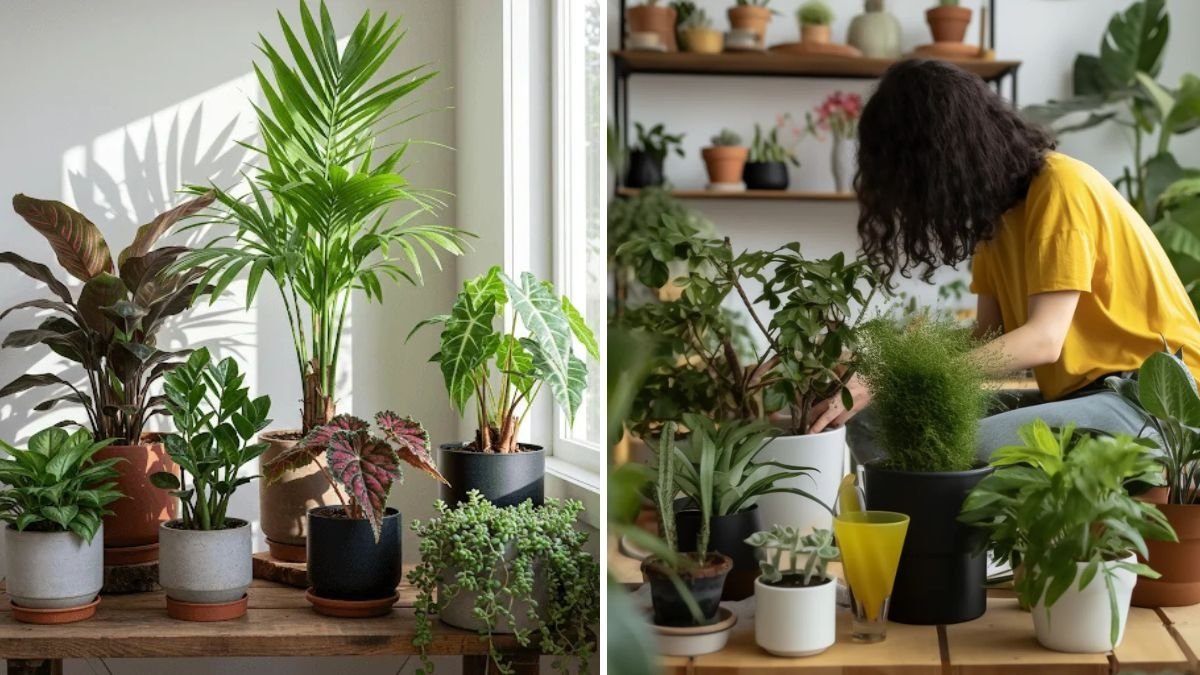




Leave A Comment